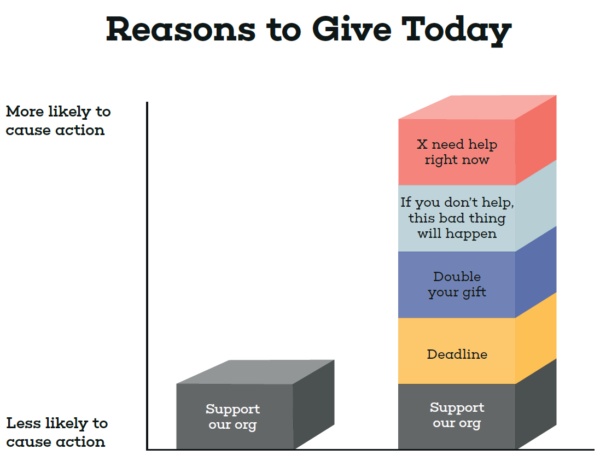It’s the worst day.
You get a deep cut on your hand while preparing for a summer barbeque. It looks bad to you. So you head to the emergency room!
But when you get to the ER… some bored receptionist takes your name, gives you a load of paperwork, and tells you to sit down and wait.
So you wait. And wait.
Then the automatic doors BURST open, and they wheel in a guy who’s bleeding and eerily still!
“Fell through a plate glass window! We’re losing his pulse!” a paramedic yells.
They wheel the gurney right past where you’re waiting. And a guy who looks a lot like George Clooney LEAPS into action to try and save his life!
You may think you’re in an episode of ER™ (the early years), but you’re actually… in the fundraising ER.
You see, you ended up in your donor’s waiting room because you forgot the urgency in your fundraising appeal.
When asking your donors to give in your appeal letter, you used phrases like:
“Will you consider making a gift today?” or “Please support our organization.”
Meanwhile, another organization used phrases like:
“”Here’s why your gift is needed TODAY” and “Here’s the [negative consequence] that will happen if this problem isn’t solved.”
Here’s why this matters:
Your donors triage their mail a lot like ER docs triage their patients.
Right now! Stat!
For your donor, these are the personal letters, the mysterious envelopes, and fundraising appeals that share the urgency to give today. In the ER, this is the guy on the gurney.
Later!
For your donor, this is bills and other stuff she doesn’t dare throw away yet. It may also be fundraising appeals from organizations she especially cares about. In the ER this would be a kid with the stomach flu.
When we get to it.
For your donor, this is everything else. Junk mail and the fundraising appeals that don’t give a good reason to give a gift today. In the ER, this is you with the cut hand… still waiting.
A lot of organizations make the mistake of hiding the urgency from their donors. And their appeal ends up in the “later” or “when we get to it” pile.
Big mistake.
Here’s where my ER metaphor breaks down.
The ER docs will eventually get to you with your cut hand.
But if your appeal gets put in the “later” or “when we get to it” pile, chances are your donor will never get to it.
She’s busy. And there’s more mail arriving tomorrow. So mail that gets set aside tends to get recycled… it just takes a bit longer to get to the recycling bin.
You must SHARE the urgent reason to give with your donor — quickly! On the outer envelope. Right at the start of your letter. Repeated throughout the letter. In the P.S. On the reply card.
That’s what it takes to get noticed in your donor’s mailbox AND in the ER.
Your cause is important — you wouldn’t be writing to your donor otherwise. Make the urgency crystal clear! And tell the donor exactly how she can help.




